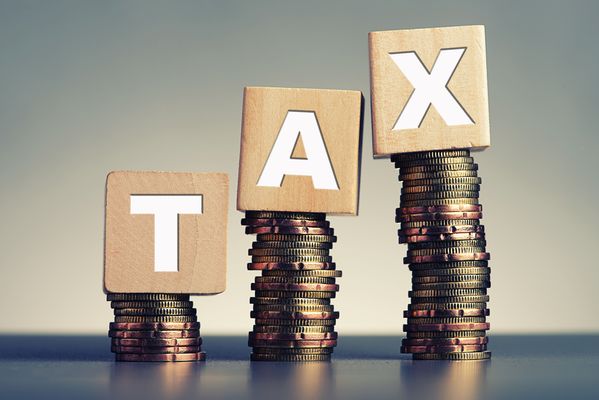3.1.7
The Pilgrimage of Grace
Reasons for the Pilgrimage of Grace
Reasons for the Pilgrimage of Grace
In 1536, Henry faced a huge rebellion in the North, with over 40,000 rebels heading south to London. They saw themselves as pilgrims defending their faith, not rebelling against the King which was treasonous.


Religious reasons
Religious reasons
- The North was mainly Catholic, so didn’t support Henry’s break from Rome.
- They opposed the Dissolution of the Monasteries as an attack on Catholicism.


Religious reasons cont.
Religious reasons cont.
- They were scared that all churches would be shut down.
- This was probably the main reason.
- The rebels wore badges with religious symbols on, swore a religious oath and marched singing hymns.
- They carried the banner of St Cuthbert from Durham Cathedral. On their way south, they restored 16 religious houses.


Economic reasons
Economic reasons
- The 1534 Subsidy Act tax was still being collected two years later. Tax was only usually raised to pay for war, but England was at peace.
- Poor harvests in 1535 and 1536.
- There were complains about rising rent and enclosure.
- Gentry and nobility opposed the Statute of Uses, which taxed the land they inherited.


Political reasons
Political reasons
- The nobility felt threatened by the power of Cromwell over the King.
- The nobility hated Cromwell for his low birth and Protestant views.
- If they could remove Cromwell, they could increase their own power and wealth.
The Lincolnshire Uprising, 1536
The Lincolnshire Uprising, 1536
The Pilgrimage of Grace began in Lincolnshire in October 1536.


2nd October
2nd October
- A local shoe-maker led 3,000 commoners in rebellion against the dissolution and high taxes.
- He called himself Captain Cobbler.


4th October
4th October
- The gentry took over from Captain Cobbler.
- This made it more political.
- The Bishop of Lincoln was murdered by a mob while inspecting the clergy.


7th October
7th October
- 10,000 rebels marched into Lincoln and sent a set of articles outlining their complaints to Henry.
- Mainly about the dissolution and high taxes.


10th October
10th October
- Henry’s reply reached the rebels.
- If they didn’t stop he would punish them harshly and destroy all their property.
- He sent an army of 3000 men under the Duke of Suffolk to deal with them.


11th October
11th October
- The gentry backed down and asked for forgiveness from Henry.
- With their leaders gone, the commoners also went home, although many were still angry.
- The Lincolnshire Rising was over.
Yorkshire Rebellion, 1536
Yorkshire Rebellion, 1536
At the same time at the Lincolnshire Uprising, a rebellion broke out in Yorkshire under the leadership of a lawyer named Robert Aske. There were 40,000 rebels divided into nine well-armed armies, each led by the gentry or nobility who met regularly and were called captains.


16th October
16th October
- Robert Aske and 10,000 rebels entered York.
- He made sure the rebels behaved well.
,h_400,q_80,w_640.jpg)
,h_400,q_80,w_640.jpg)
19th October
19th October
- Hull surrendered to the rebels after a five-day siege.


21st October
21st October
- Pontefract Castle fell to the rebels after Lord Darcy joined them.
- Henry appointed the Duke of Norfolk to negotiate with the rebels, as there were too many of them to defeat in a battle.


27th October
27th October
- Norfolk’s army and the rebels meet at Doncaster Bridge. It was agreed that two pilgrim leaders could take their demands to Henry himself.
- Henry however refused to discuss them and ordered ten rebel leaders to be sent to London for punishment.
- He told Norfolk to negotiate again.
- The rebels wrote down their 24 key demands in the Pontefract Articles.
- Henry told Norfolk to offer a truce and gave him the power to summon a northern parliament to discuss the Pontefract Articles.


6th December
6th December
- 40 pilgrim representatives met Norfolk and accepted Henry’s offer, and it was agreed that no more monasteries would be dissolved until the new parliament.
- Aske felt he had succeeded and told the pilgrims to go home.
- However, Henry had no intention of keeping his promise, as he saw the pilgrims as rebels who should be punished as traitors.
- He only negotiated to earn himself time and stop them marching south.


January 1537
January 1537
- The Northern parliament still hadn’t met, so there were two small rebellions in Hull and Carlisle.
- They were unsuccessful but gave Henry the excuse he wanted to punish the pilgrims.
- Norfolk was ordered to round up the leaders and execute 187 of them.
- Robert Aske was hanged in York as an example to all the pilgrims.
1Henry VIII & Wolsey, 1509-1529
1.1Henry VIII & Wolsey, 1509-1529
2Henry VIII & Cromwell, 1529-1540
3The Reformation & its Impact, 1529-1540
3.1The Reformation & its Impact, 1529-1540
3.1.1The Break with Rome
3.1.2Opposition to the Reformation
3.1.3Impact of the Reformation
3.1.4Role of Religious Houses
3.1.5Dissolution of the Monasteries
3.1.6Impact of Dissolution
3.1.7The Pilgrimage of Grace
3.1.8Evaluating the Pilgrimage of Grace
3.1.9End of Topic Test - The Reformation
3.1.10End of Topic Test - The Reformation 2
Jump to other topics
1Henry VIII & Wolsey, 1509-1529
1.1Henry VIII & Wolsey, 1509-1529
2Henry VIII & Cromwell, 1529-1540
3The Reformation & its Impact, 1529-1540
3.1The Reformation & its Impact, 1529-1540
3.1.1The Break with Rome
3.1.2Opposition to the Reformation
3.1.3Impact of the Reformation
3.1.4Role of Religious Houses
3.1.5Dissolution of the Monasteries
3.1.6Impact of Dissolution
3.1.7The Pilgrimage of Grace
3.1.8Evaluating the Pilgrimage of Grace
3.1.9End of Topic Test - The Reformation
3.1.10End of Topic Test - The Reformation 2
Unlock your full potential with Seneca Premium
Unlimited access to 10,000+ open-ended exam questions
Mini-mock exams based on your study history
Unlock 800+ premium courses & e-books
